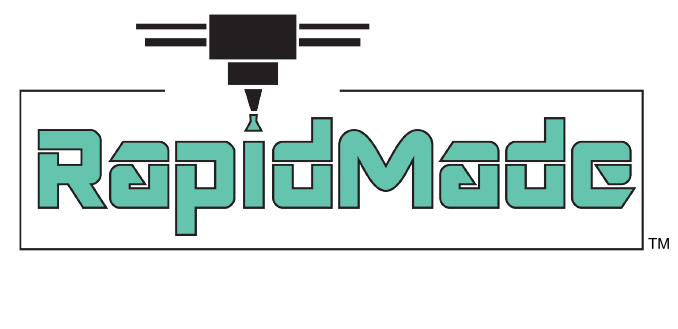The thermoforming process is an important process to know about when looking to step into the world of production manufacturing. It occupies a unique space due to low cost and quick turn tooling manufacturing while still keeping part costs very low. The process means heating thermoplastic sheets and shaping it over a mold into the desired shape with gravity, vacuum or pressure then letting it cool and harden. Depending on the thickness of the material, the manufacturers can use thin gauge films or thicker gauge sheets to thermoform. Typical sheet thicknesses range from 0.005” (0.12 mm) to 0.250” (6.35 mm.) Thin gauge films are typically used in packaging applications like clamshells, coffee lids and yogurt cups. Thick gauge sheets are used in durable applications like automotive bumpers, machinery guards and large scale trays for material handling. The thermoforming process can be used with many different plastic materials and once it cools, the sheets become rigid. The final formed part is typically trimmed off the sheet by hand, with a die cutter or CNC machine.
The Different Methods of Thermoforming
There are various different methods to thermoforming. These include:
Vacuum forming: This kind of thermoforming occurs between a thermoplastic sheet and a mold cavity. The vacuum pressure forces the sheet to form to the mold - thus creating the shape of the part that you are thermoforming.
Pressure forming: This is much like vacuum forming, but in addition to using negative vacuum pressure to suck a part over a mold, positive air pressure is used to force the back side of the sheet onto the mold. By using this method of thermoforming, a thicker sheet can be formed with finer details, sharper edges, and better textures thanks to the extra force applied.
Drape forming: Drape forming is laying a sheet of plastic over a mold and letting gravity form the part into the desired shape over time in an oven. This process is often slower and more costly but reduces the stress of the plastic and is often necessary for applications that require high levels of optical clarity, like forming polycarbonate cock pits. This process can only be used in limited applications where the shape of the part is very slight or subtle, but it is also necessary because excessive stress on the plastic will distort light as it passes through the sheet.
Mechanical forming: This type of forming is done by a thermoplastic sheet being mechanically forced into or around the mold by means of direct contact. While vacuum, pressure and drape forming use one-sided molds to make parts, mechanical forming uses a two sided mold. One side, the core plug, pushes the sheet into the mold cavity. This helps it form into the desired shape. This process has the highest tooling cost due to two mold halves being necessary but it also allows for the most complicated parts to be created with the deepest draws, smallest radii and finest details.
Thermoforming to Fit Any Mold
At RapidMade, vacuum forming is the type of thermoforming we use to create products. By using this process, air is sucked out in order to ensure every line is clean and smooth. Once the process is completed and the item is cooled off, the sheet is taken off the mold and any additional plastic is then removed via 5 axis CNC machine. 5 Axis CNC milling allows for very complicated trim lines to run at almost any direction through a part. The residual plastic that’s removed from the sheet is recycled for future products.
RapidMade’s vacuum forming process requires less time to make products than other traditional methods of manufacturing. Not only does this lower the turnaround time, but it also lowers the price. By using real thermoplastic materials, you are getting a stronger product than one made via a traditional 3D print process like filament extrusion. Products made that way tend not to have isotropic mechanical strength and can delaminate between layers. Additionally, a part that can take days to weeks to make via 3D printing can be made in seconds to minutes at much thinner wall thicknesses and lighter weights. Some 3D prints can also be very warp prone while a formed part can reduce warpage since it holds its shape as it cools on the mold.
RapidMade uses 3D printed molds with an HP Multijet Fusion in order to make products that can take up to as little time as 48 hours. This can also cut up to 50% or more of the cost for small parts. Larger molds are milled from high temperature and high density aircraft grade urethane foam. This allows for low cost and rapid tooling manufacturing for parts as large as 4’ x 8’ in size - quite massive. Despite using these novel materials, every mold RapidMade produces is guaranteed for life. Rapid Made uses HIPS, PETG, ABS, Kydex, PC, HDPE, PVC, Acrylic sheets to make their production grade parts.
Get a Quote Today
RapidMade offers potential customers quotes in under 24 hours. Our engineers will look at your design to determine the quote and products are typically shipped within two to four weeks. This means that you will be able to receive your thermoplastic products within a smaller amount of time than you would with other companies. If you have any questions you can call and talk to a knowledgeable expert who can answer all your questions right there on the phone. With this, you can help grow your business and sell your products to customers at low cost and record time.


